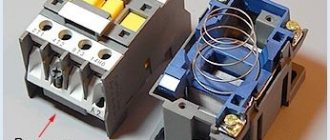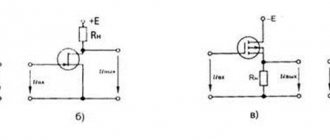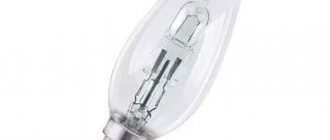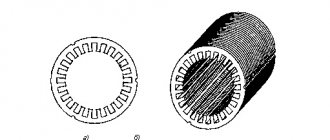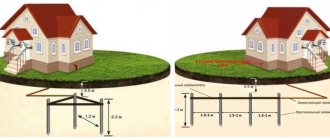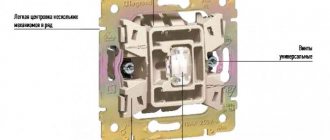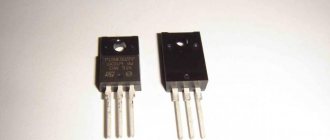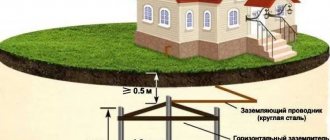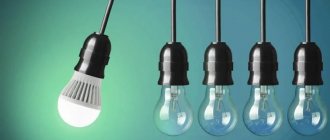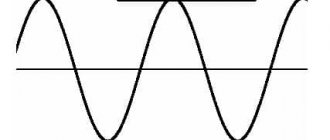Home » Lighting » LED lighting » How to choose an LED corn lamp
In our reviews we touched on various LED lamps, but somehow the so-called corn lamps always slipped through. Finally, we decided to dwell on them in more detail, and tell some of the features, and most importantly, answer the question of how to choose an LED corn lamp and what to pay special attention to.
How to choose an LED corn lamp
Until recently, there were no serious questions about this, because let’s be honest, there was nothing to choose from. The stores sold one or two types, and no more. Even Chinese stores could not really please us. There was only one criterion for selection - the manufacturer, the more famous the name, the better (supposedly). 2015 made some changes, now there is plenty to choose from and what to strive for, so let’s take a closer look at how to choose an LED corn lamp. Find out about the best LED lamp manufacturers.
It’s worth pointing out right away that corn can only be grown indoors; they are not suitable for the street at all.
What is an LED corn lamp?
Externally, the so-called “corn” is a small white cartridge, the height of which does not exceed 9 centimeters, with rows of LED elements located on the side face of a contrasting yellow color. Of course, when conducting a comparative analysis with old-style incandescent lamps, the advantage of the LED device becomes obvious, because it shines at least 10 times brighter.
Thus, the glow of a 10-watt corn lamp is equivalent to a 100-watt incandescent lamp, so there are no complaints about it in terms of economy.
But is everything so smooth in practice, because manufacturers of such devices guarantee that the service life of an LED lamp is at least 10 years, and if we take into account that the device will not be used constantly, then this figure has the potential to be increased by two or even three times. But since corn costs much more than standard light bulbs, it is not at all surprising that many craftsmen are rushing to test it in all respects in order to understand whether such investments are justified or whether it is worth finding a more worthy alternative to this device.
Main types
In total, three main types can be distinguished; I would like to note that if you want to find European analogues, enter the query “corn led bulb”, so you can find “Corn” from real manufacturers. But, pay attention to the fact that they often come with a voltage of 110; before purchasing, check with the sellers for such nuances; we are only suitable for 220V. If you compare it with Tomich’s lamp, there are specific differences.
Main types of corn:
- Classic (large) ones come with diodes, each 0.15 W.
- Small ones. Usually there are bad diodes, every 0.08 W.
- OWL They are considered modern and have an interesting appearance.
All these types have one big drawback - poor color rendering. This can be corrected by soldering in an additional capacitor; by the way, the flickering also disappears.
Weak points of the design
There are several varieties of “corns”: classic, small, COB (Chip-on-board), with and without protection in the form of a flask, despite the fact that each of these types has its own characteristics, as well as advantages and disadvantages.
It is worth noting that the LED standard seriously outperforms mercury, fluorescent devices and incandescent lamps in a number of parameters, however, they also have disadvantages.
Among them, it is worth highlighting the high cost, open LED elements (relevant for designs without protective bulbs), the need to build in an additional capacitor that provides the voltage required for full operation of 220 volts, the discrepancy between the declared and actual technical characteristics, since these devices have three times less power than the manufacturer promises, as well as loss of its own qualities under conditions of long-term or frequent use.
In addition, craftsmen conducting independent testing of the device have repeatedly noted such significant shortcomings as insufficient brightness of lighting, blinking, and the absence of a residual glow effect, since the diodes of the device tend to go out completely immediately after it is turned off, plunging everything around into pitch darkness .
Classic corn
It is considered the most reliable, it is optimal to use it in apartments and other residential premises.
The number of diodes ranges from 24 to 165.
The base is standard E14 and E27.
For all the time they showed themselves only on the good side, there were some copies that flickered too much, an additional capacitor completely corrected this problem.
Comparison table of classic LED lamps Corn
Small ones with a flask
If we speak for this option, then our resource does not recommend them at all. Just look at the cons:
- They heat up quickly.
- Heat is not dissipated due to the design.
- All diodes are stopped too close to each other. After a month, 30% of them burn out, after a year, 50%.
- They rarely last more than two years.
- Quite a high cost, considering that they are absolutely terrible in terms of assembly and other qualities.
The approximate luminous flux per 1 W is only 80 lumens, from here you can take the following bad results:
The size of the case also depends on the power; this can be used as a trick. If you see a bulb that is too small, you should know that it quickly overheats and the light is weak. If we return to the question: how to choose an LED corn lamp, we repeat again, we do not recommend this option, we left it for you only as an introduction.
Main varieties
LED corn lamps are divided into three types:
- classic - high-quality diodes with a power of at least 0.15 W are installed;
- small with a frosted bulb - bad LEDs up to 0.08 W;
- Chip-on-Board is a modern design using COB diodes.
Low color rendering unites all these products. Often they are produced without a capacitor, which is why they flicker, causing damage to vision. By soldering such an element into the circuit, you will increase color rendering and get rid of one of the negative effects.
Classic "corn"
The best of all three types, excellent value for money. “Corn” lamps with E14, E27 and E40 sockets, in which from 40 to 70 LEDs are built-in, have become widespread.
Important! Lamps are also designated as G4, G9, etc., which also indicates the size of the base.
Testing has shown that most of these products operate smoothly for four years. With continuous use, yellowing of the plastic and a slight decrease in luminous flux may occur.
Comparison table for classic “corns”:
| Number of diodes | Claimed power (W) | Actual (W) | Brightness(Lm) |
| 24 | 5 | 3,6 | 300 |
| 42 | 8 | 6,3 | 500 |
| 60 | 10 | 9 | 720 |
| 84 | 15 | 12 | 1000 |
| 98 | 20 | 15 | 1200 |
| 132 | 25 | 20 | 1600 |
| 165 | 30 | 25 | 2000 |
Not all lamps are considered in the table - they can be more powerful - 80 W and higher.
LEDs of the SMD 5630 or SMD 5730 models are mounted in classic “corns”. Companies that have been producing them for many years use diodes of about 0.5 W. Chinese manufacturers take components with much smaller physical parameters, but install a weak crystal. The nominal characteristics of products increase, but this does not make them shine better.
Multiply the power of the LEDs indicated in the passport - 0.15 W by their number and get the actual power for the selected lamp.
The diodes are attached to a metal plate necessary for heat removal.
Small "corns" with a flask
The worst "corn" of the three varieties listed. Not recommended for home use due to the following disadvantages:
- get very hot due to their small size, the presence of a frosted bulb and the attachment of LEDs to a textolite plate (impairs heat dissipation);
- LED components are located too close - after a while the textolite burns through to holes;
- About half of the lamps fail after 1-2 months.
If you buy a small “corn” with a flask from a Chinese manufacturer, you will get more disadvantages.
During tests of this type of lamp, consisting of 69 diodes with a declared total power of 20 W, its actual value was 6 W - three times worse! A separate LED did not exceed 0.08 W.
Despite the parameters indicated in the passport, in rare cases the maximum brightness reaches 100 Lm (for the model being tested).
Let’s compare small “corns” with a flask:
| Number of diodes | Power according to the passport (W) | Real (W) | Brightness(Lm) |
| 24 | 7 | 2,1 | 200 |
| 36 | 12 | 3,2 | 300 |
| 48 | 15 | 4,3 | 400 |
| 56 | 18 | 5 | 500 |
| 69 | 20 | 6,2 | 600 |
With much better power parameters compared to classic “corn” ones, the small ones actually produce less.
Modern “corn” on OWL LEDs
Another good option along with the classic ones. But while the latter can still be repaired, in the case of OWL diodes this is almost impossible. Let's add a higher cost here.
Actual and declared parameters of modern “corns” on Chip-on-Board diodes:
| Lamp size(mm) | Power, W) | Actual (W) | Brightness(Lm) |
| 105x35 | 7-9 | 5 | 500 |
| 120x45 | 9-15 | 9 | 900 |
| 150x70 | 20 | 14-15 | 1300-1400 |
Modern corn with COB LEDs
And let’s be honest, in terms of cost they cannot be called optimal. If you are a fanatic, then this option is suitable for you. The characteristics say that they have a power of 7 to 20 W, here are the real data, try to build on them only.
LED corn E27. A light bulb you shouldn't take
Hello.
Just a few days ago I shared with you my impressions of 15-watt LED light bulbs with a GU5.3 base, which have already taken their place in the lamps designated for them. Today I want to continue the series of reviews about LED light bulbs and tell you to complain about the corn with an E27 base, bought on tinydeal. There were already 4 of these bulbs purchased, unfortunately, today only this one is in use. Why? Read on...
So, as I said above, we ordered light bulbs from the tinydeal store. To my surprise, I received them quite quickly - 22 days after placing the order and paying for it. All the light bulbs were packed in a regular plastic bag and generously wrapped in bubble wrap, thanks to which they spent their entire journey in complete safety and fell into my hands intact. Each of the light bulbs was packed in a white cardboard box without any identification marks.
After I saw the packaging of the light bulbs, I was surprised. To be honest, it seemed to me that it would be much larger than it turned out to be in reality. The dimensions of the light bulb are very compact. Length 9 centimeters.
Diameter - 3 centimeters.
The previous photo clearly shows that the light bulb is crooked. Unfortunately, a similar defect is observed in each of the 4 ordered. But if you do not take this into account, the rest of the light bulbs are assembled quite well. By the way, I was not able to get to the insides of at least one of them, so there will be no “dismemberment” today.
There are 6 holes at the end of the plastic flask. This is the only passive cooling option provided in the product under review; I could not find any more radiators or other methods of temperature removal.
The light source is an external SMD5630 LED, of which there are already 56 pieces. In the table below you can see its main characteristics: The diodes are arranged in 8 rows of 6 pieces each. Another 8 diodes are located at the end of the light bulb. Thanks to this design, the light is evenly scattered in all directions and is not directional.
The store’s website states that the power of this light bulb is 18 watts and the brightness is 1650 lumens. Something tells me that this is all a hoax and the real data of the light bulb does not even come close to what is stated.
In order to verify the capabilities of this light bulb, I decided to compare it with a regular 75-watt incandescent lamp. This is exactly the light bulb used in my desk lamp.
So first let's try to light something up. The light bulb is located approximately 50 centimeters from the table surface. This is what a flashlight looks like illuminated by an incandescent light bulb:
We wait until the light bulb cools down, unscrew it and screw in our LED corn in its place. By the way, during checkout, the normal white glow was selected instead of warm white. In fact, I think it's more of a cool white light as it has quite a strong blue tint to it. This is what our flashlight looks like, illuminated by this light bulb under the same test conditions:
In general, you don’t even need to go to a fortune teller - a diode lamp illuminates everything much worse than a 75-watt incandescent lamp. Along with measuring the illumination of the object, I captured and compared the data obtained using “Light Sensor 2”.
On the left is the result of an incandescent lamp - 1994 Lux. On the right is the data of the diode light bulb - 1023 Lux. Which is almost 2 times less!!!
But dim brightness is half the problem. While doing all these tests, I noticed that the light was blinking a lot. This is not visible to the naked eye, but through the camera screen it is very noticeable.
Combining all the data obtained, it becomes clear that lighting frequently used rooms with such light bulbs becomes not only difficult, but also unsafe for health.
So one of the four bulbs went to illuminate the pantry. I don’t go there often and don’t spend much time. And a hammer or screwdriver is not difficult to find even in this lighting. A working light bulb looks like this:
The only advantage of this light bulb is that it practically does not heat up. Even after 20 minutes of continuous operation, the plastic bulb was slightly warm and the light bulb could be unscrewed without fear of burning your hand. And this light bulb does not have a residual glow effect, like most similar ones. That is, after turning it off, it goes out completely, the diodes do not light up. Otherwise, it's just wasted money.
Summarizing all of the above, we can conclude that it is absolutely not worth buying such light bulbs. They are 90% unsuitable for normal use and can only be used for lighting small non-residential premises in which no one stays for a long time.
That's probably all. Thank you for your attention and your time.
Advantages and disadvantages of corn
Advantages:
- You can count the number of LEDs and calculate the actual power. The type of LED is also visible.
- No need to use a flask. Although there is a peculiarity here, fire regulations prohibit the use of any LED lamps that do not have a bulb. So in office buildings it is best to avoid such installation.
- They shine equally in all directions, no need to buy additional diffusers.
- Easy to repair and disassemble.
- There are no radiators for cooling, which is why they have such a low cost.
Cons of corn
There is only one:
- All contacts are open and they are under constant voltage. Even if we take into account that it is not large, safety precautions are violated.
